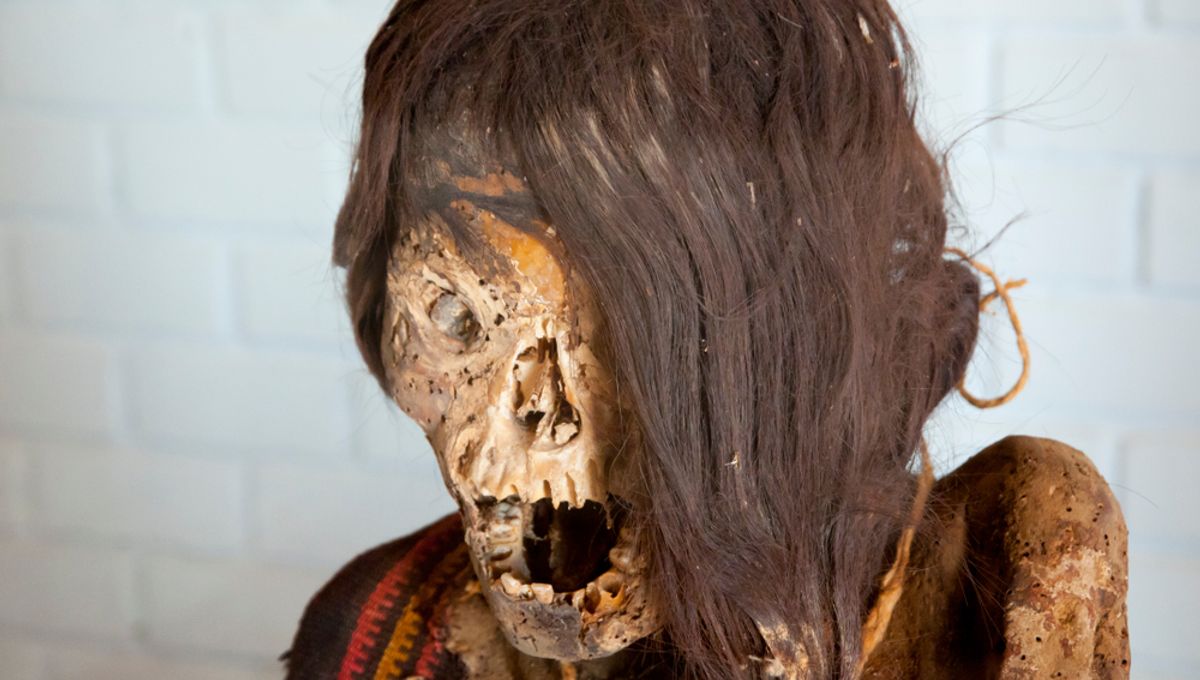
A mummified woman discovered over a century ago in Bolivia may have suffered from a fungal infection commonly known as Valley Fever. While the pathogen usually causes non-fatal respiratory systems, in this case, it appears to have destroyed the victim’s bones, possibly leading to her death.
Caused by the inhalation of the spores of certain Coccidiodes species of fungus, Valley Fever – also known as Coccidioidomycosis – is a non-contagious disease that occurs in arid and semi-arid regions of the southwestern US and Central and South America. It is usually contracted by coming into contact with soil or dust and most commonly affects manual laborers.
“Inhalation of Coccidioides arthrospores causes a self-limited, acute, community-acquired pneumonia-like disease as a primary form,” write the authors of a new study describing the ancient mummy. However, they go on to explain that “in 1 percent – 5 percent of all coccidioidomycosis cases, the disease can develop into a progressive, chronic, and often fatal disseminated form.”
In less than half of all disseminated cases, the pathogen attacks the bones, leaving significant lesions on the skull and spine. The presence of these injuries on the mummy’s skeleton led the researchers to believe that she may have fallen victim to this particularly nasty form of the disease.
Originally discovered in a cave in western Bolivia in August 1897, the mummy was later acquired by the royal consul of Italy and is currently housed at the Anthropology Museum of Federico II University of Naples. Dated to 765 years ago, the body belongs to a female individual who died between the ages of 25 and 35, before being “embalmed in a curled-up sitting position, with her legs folded into her chest and her hands on her shoulders.”
Like other ancient Andean mummies, the woman had her abdomen stuffed with coca leaves while her skull was “artificially deformed” to make it appear more elongated. Radiographic analysis of the body revealed “numerous osseous lytic lesions with central cavitation concentrated on the cranial table and vertebral bodies,” explain the study authors.
“The observed condition could correspond to the secondary phase of coccidioidomycosis.”
Initially, the researchers suspected that the mummy may have suffered from tuberculosis (TB), which was present in the Andes during the 13th century and produces similar bone defects. However, closer inspection suggested that the nature and location of the mummy’s lesions differed from those caused by TB, leading them to a diagnosis of Valley Fever.
“This diagnosis is noteworthy because coccidioidomycosis was mainly described as a male work-related disease and has never been found in ancient western Bolivia,” write the study authors. The detection of the pathogen in a female, therefore, suggests that women may have carried out manual labor that exposed them to dust in pre-Hispanic South America.
The study is published in Latin American Antiquity.
Source Link: 100 Years After Its Discovery, We May Know What Killed This Bolivian Mummy